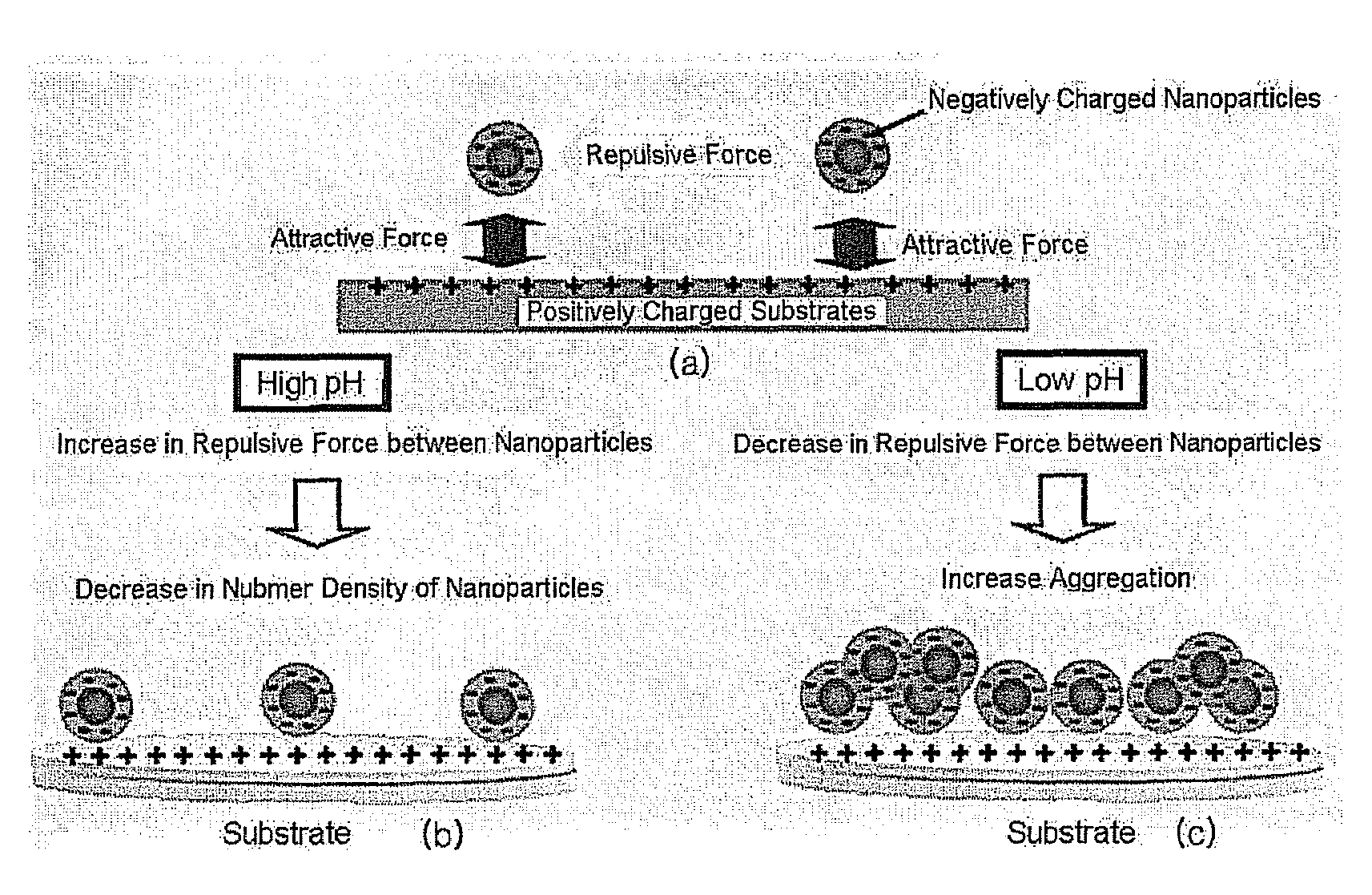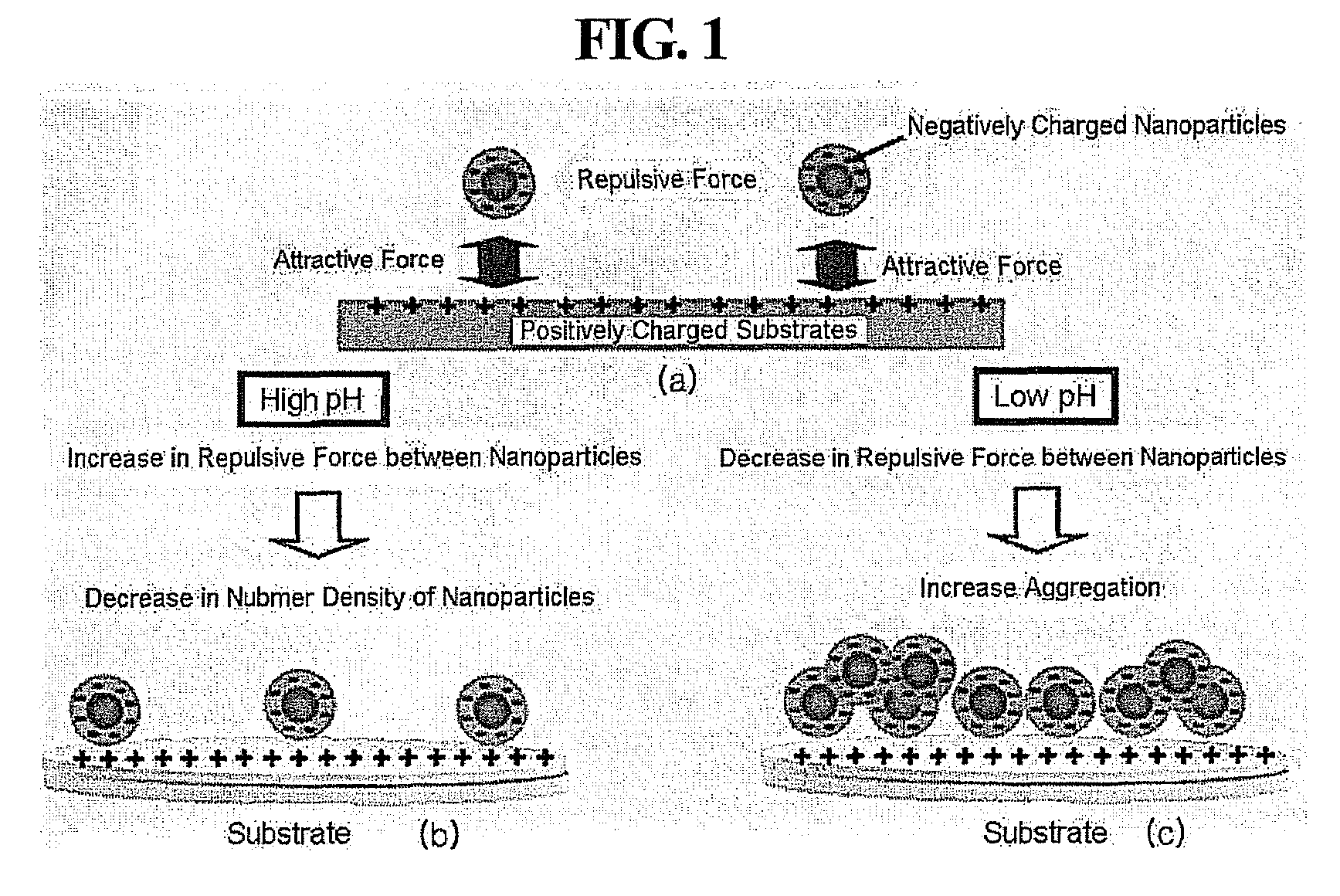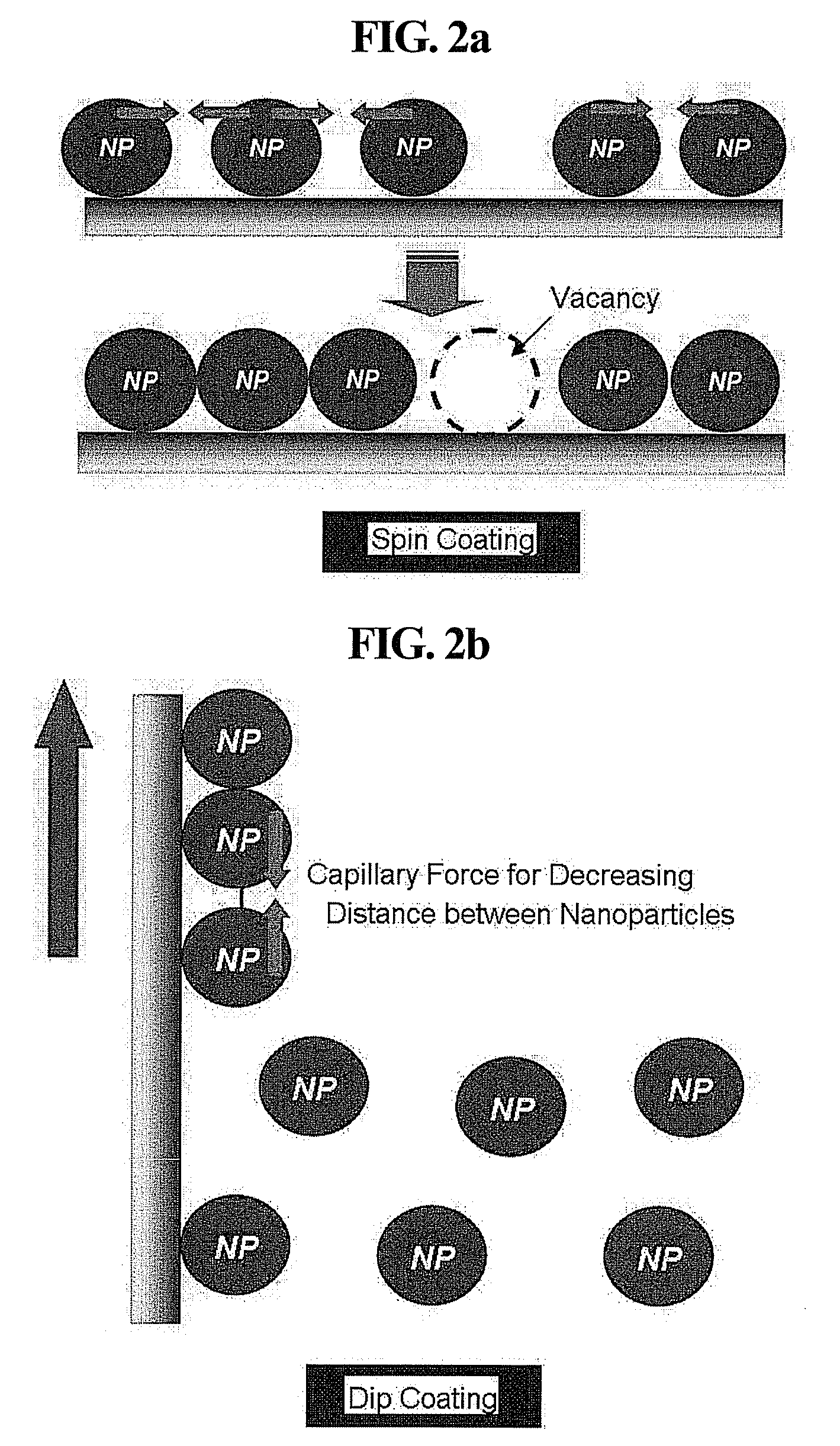Method For Dispersing Nanoparticles and Methods for Producing Nanoparticle Thin Films By Using The Same
a nanoparticle and thin film technology, applied in the field of nanoparticle dispersing, can solve the problems of nanoparticle defects, easy dispersal, and destruction of nanoparticles, and achieve the effects of avoiding the formation of defects of nanoparticles
- Summary
- Abstract
- Description
- Claims
- Application Information
AI Technical Summary
Benefits of technology
Problems solved by technology
Method used
Image
Examples
example 1
Surface Modification and Dispersion of Nanoparticles
[0059]1 mL of mercaptoacetic acid was slowly added dropwise to 10 mL of a dispersion of palladium (Pd) nanoparticles (0.1 wt %) in toluene under a nitrogen atmosphere. The mixture was reacted while stirring rapidly for 4 hours. The reaction temperature was maintained at 100° C. to modify the surface of the Pd nanoparticles. As a result of the reaction, the surface of the Pd nanoparticles was negatively charged. The Pd nanoparticles were not readily dispersed in the toluene as the reaction proceeded. After completion of the reaction, the reaction mixture was centrifuged at 9,000 rpm for 5 minutes to separate a precipitate of the nanoparticles.
[0060]The precipitated nanoparticles were re-dispersed in chloroform by sonication and centrifuged at 9,000 rpm for 5 minutes to wash the precipitated nanoparticles. The series of re-dispersion and centrifugation was repeated five times or more to remove the unreacted mercaptoacetic acid. The w...
example 2
pH Adjustment of Nanoparticle Dispersions
[0062]The Pd nanoparticles surface-modified with the mercaptoacetic acid, which were prepared in Example 1, were dispersed in Tris buffer solutions having different pH values of 7.0, 7.4, 7.8, 8.2, 8.6 and 9.0. The respective pH-controlled Tris buffer solutions were prepared by adding appropriate amounts of a 0.1 M HCl solution to 0.1 M Tris buffer solutions. The pH values of the pH-controlled Tris buffers were determined using a pH meter.
example 3
Formation of Nanoparticle Monolayers
[0063]Silicon wafer substrates were dipped in a piranha solution (H2SO4:H2O2 1:3 (volume / volume) (v / v), ultrasonicated for 15 minutes, washed with methanol / toluene, ultrasonicated in an RCA solution (NH4OH:H2O2:H2O=1:1:5 (v / v / v)) at 70° C. for 10 minutes, and sufficiently washed with methanol using distilled water.
[0064]A 10 millimolar (mM) aqueous solution of polyallylamine hydrochloride (PAH, Mw=70,000) was spin-coated at 5,000 revolutions per minute (rpm) on the washed substrates for 30 seconds. The PAH-coated substrates were baked at 150° C. for 10 minutes, and then the respective nanoparticle dispersions having different pH values prepared in Example 2 were spin-coated thereon at 3,000 rpm for 30 seconds to form nanoparticle monolayers. The spin coating was conducted three times and washed using distilled water. The number density of the nanoparticles in each of the nanoparticle monolayers was observed under a scanning electron microscope (SE...
PUM
| Property | Measurement | Unit |
|---|---|---|
| reaction temperature | aaaaa | aaaaa |
| temperature | aaaaa | aaaaa |
| size | aaaaa | aaaaa |
Abstract
Description
Claims
Application Information
 Login to View More
Login to View More - R&D
- Intellectual Property
- Life Sciences
- Materials
- Tech Scout
- Unparalleled Data Quality
- Higher Quality Content
- 60% Fewer Hallucinations
Browse by: Latest US Patents, China's latest patents, Technical Efficacy Thesaurus, Application Domain, Technology Topic, Popular Technical Reports.
© 2025 PatSnap. All rights reserved.Legal|Privacy policy|Modern Slavery Act Transparency Statement|Sitemap|About US| Contact US: help@patsnap.com



